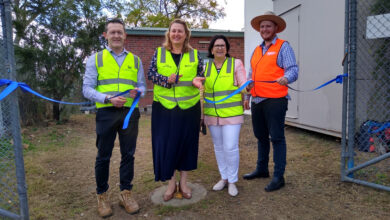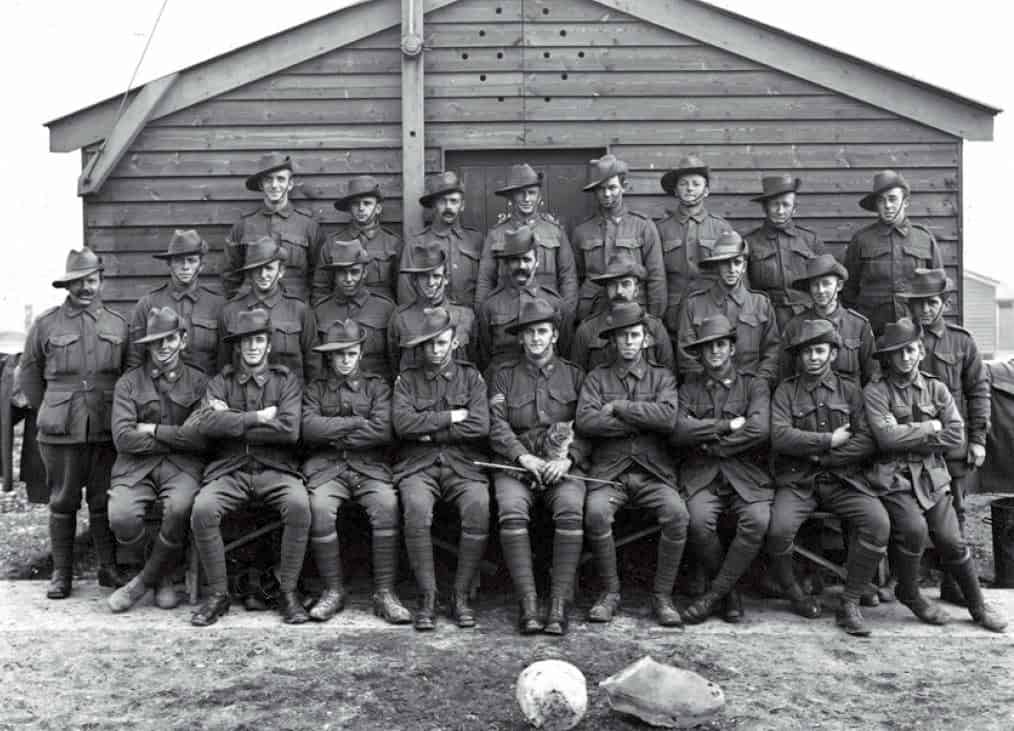
“Ipswich Lads” of the 4th Pioneer Battalion, 1916.
Picture courtesy: Ipswich In The 20th Century by Robyn Buchanan
As the Armistice was signed on 11 November 1918 in a train carriage in France, Ipswich went wild.
Bells rang and the bands of the city gathered and played in the streets. When news was received at 7pm, that is was about to be signed, a hooter was sounded. Bringing four years of fighting in WWI to an end, Ipswich decided the next day would be a public holiday and a celebration was held in Queens Park.
The first signs of the war coming to an end was a month earlier on 14 October, 1918. Ipswich was awoken at 4am by the sound of ringing of bells, factory whistles and sirens. The local paper’s headline read ‘Germany Caves In’.
Bob Sneyd was only a child during World War I, but could recall the excitement of the peace celebrations.
“Eventually, on Armistice Day in 1918, the 11th of November, I was just preparing for bed and I heard a terrible din from down town. Locomotive whistles blowing, the big bell at St Paul’s Sunday School tower that was being tolled,” he said.
“Then, of course, out came the good old Salvation Army band and they marched round the town, all round Bell Street, up Nicholas Street. Round and round and all the populace came out. The women with the tin pans and spoons. They were banging these pans and people were ringing hand bells. Everybody was rejoicing.”
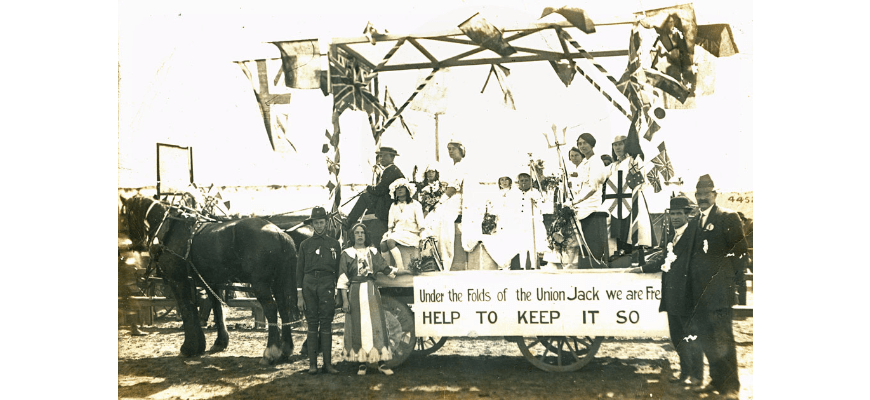
Australian Natives’ Association float, Ipswich, 1918. This thought to be a float from celebrations after World War 1. Henry Whittaker is driving the dray that belonged to his business. Sign on the dray reads: ‘ Under the folds of the Union Jack we are free-Help to keep us free’. Picture courtesy: Ipswich Libraries
The celebratory mood was tempered by the grief of the families who mourned for the soldiers who died in the war.
Among them was Beatrice Scott from Waghorn Street. Her son, Charles Douglas Scott (pictured), 26, was killed in action on the fields of Messines, Belgium the year earlier.
As Britain entered the conflict of WWI in 1914, calls went out to Queenslanders ‘to help the mother country in her hour of need’. Many Ipswich men volunteered and soon there were groups leaving Ipswich for army camp.
Mr Scott enlisted into the Army on 22nd August, 1914 at the Ipswich Drill Hall. It was only a few days after war started, he was 22 years old.
Mr Scott grew up in Peak Crossing and was a regular on possum shooting expeditions with other boys in the town. He served in the Senior Cadets for three years and on his enlistment papers described himself as an expert rifleman. He was also a fine swimmer and horseman.
A popular rugby league player, Mr Scott played for the Starlights team, North Ipswich as a forward. He represented Ipswich, Queensland (1911 and 1913) and Australia against England, New South Wales and New Zealand in matches played in Brisbane.
Mr Scott began his employment as an office-boy for Ipswich City Council in 1906 and worked his way up to the position of Junior Clerk. Mr Scott received a fountain pen on leaving the Ipswich City Council in October of 1908. His next employment was a position at The Queensland Times as a reporter. In 1914 he moved on to a position as a senior reporter for Brisbane paper The Courier.
Mr Scott completed his training at the Enoggera Camp grounds along with others in the mounted infantry, the infantry and the artillery units. Sometimes known as Charlie or Scotty, Trooper Charles Scott became a Corporal in the 2nd Light Horse Regiment unit.
He embarked for overseas duty with A.I.F on A15, His Majesty’s Australian Troopship “Star of England” on 24th September 1914 from the port of Brisbane, Queensland.
Corporal Scott served as an infantryman with other members of the Light Horse Regiment who assisted in the fighting at Gallipoli.
By 1915, Ipswich recruits were sending letters home from Egypt about their exploits overseas. As many Ipswich men moved to Gallipoli to fight, reality of the war soon struck home.

Charles Douglas Scott. Image courtesy: Picture Ipswich

Enlistment paper. Picture courtesy: National Archives of Australia
Major Sydney Robertson of Quarry Street and Lt John Roberts of Flint Street, North Ipswich were the first Ipswich men to die in the beginning days of the Gallipoli campaign in April, 1915. Soon the sick and wounded started to arrive back in Ipswich.
The newspapers printed lists of those killed and injured. The unhappy task of breaking the news to family sometimes fell to the Mayor. He received the official telegram and would then be accompanied by a local minister to visit the family.
Despite this, young men continued to volunteer, convince it was their duty to do so. A wave of patriotism flooded through Ipswich and its surrounds. Flags were hung in shops, Red Cross branches gathered together to make clothes and bandages for injured soldiers and socks were knitted to be sent to soldiers overseas.
Even the Mayor of Ipswich Alderman Perry, was a prolific sock knitter. A ‘Tea Train Society’ was formed by women to meet soldiers with refreshments as they came through Ipswich on Troop Trains.
Recruiting rallies and marches were held with the most famous march beginning in Warwick and making its way through towns to Brisbane. Met with bands and parades in each town, they changed into dungarees along the way and were soon known as ‘The Dungarees’ or ‘Binnie’s Dungarees’ after the leader Lieutenant J. D. Binnie.
In Ipswich they were met by a huge crowd and the Ipswich Ladies Patriotic Committee presented them with a side drum. The men stayed at the Drill Hall in Milford Street for two days and left with 36 local recruits.
In 1915 Mr Scott was admitted to hospital for measles and was transferred to England.
In February 1916 Mr Scott was docked a day’s pay for contracting venereal disease. This was common in WWI but not often discussed during or after the war.
He was admitted to hospital for 35 days for treatment. The day after he discharged from hospital he was readmitted for a further 28 days. However, according to his diary, which was published in The Queensland Times, he said he was suffering from enteric typhoid. It is unclear whether he had both or not.
On 6 September 1916 Mr Scott transferred to the Infantry and became a Sergeant in the 47th Battalion. He was then dispatched to the French frontier.
By February 1917, Mr Scott was a 2nd Lieutenant and was recommended for the Military Cross. His Army record reads:
For his daring reconnaiseances in NO MAN’S LAND in daylight and dark during operations at Gueudecourt 10-18 February 1917. This officer is absolutely without fear and show initiative and enterprise of a very high order and setting a high example to his men. His efforts during this continuous period enabled us to consolidate our line to a further depth of 500 years besides giving valuable information of the enemy defences for further operations. He showed skill and bravery of a very high order.
Mr Scott was killed on 7 June, 1917 during the Battle of Messines. He was also awarded with the 1914-15 Star, British War Medal and the Victory Medal.
Mr Scott is listed on the following Honour Stones and Memorials in Ipswich: Memorial Hall Roll of Honour, Western Suburbs Honour Stone, Peak Crossing Honour Board, St. Stephen’s Church Ipswich Honour Board, St. Paul’s Church, Ipswich Honour Board.
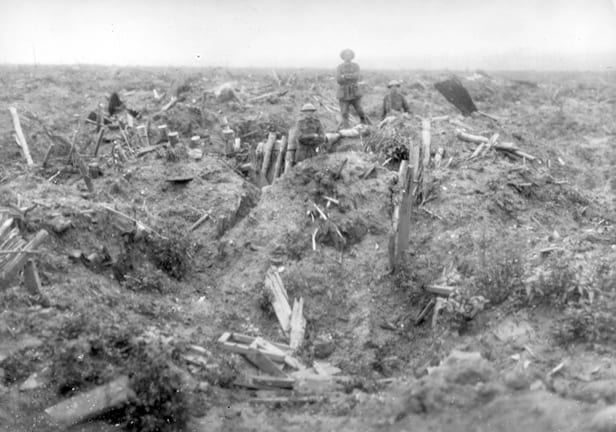
Australian soldiers at Messines in July 1917, standing in German trenches demolished by the mine blasts.
Image courtesy: Australian War memorial
Battle of Messines, 7 June 1917
The battle was opened with a massive bang that is said could be heard across the English Channel.
Under Hill 60, the 1st Australian Tunnelling Company had been digging two mineshafts since November 1916. There were 17 other mines all packed with explosives along the front. At 3.10am they were blown simultaneously creating a crater 18 metres deep and 79 metres wide.
The front line German troops were overrun within minutes and surrendered.
As the divisions of II Anzac Corps advanced, when mist cleared, the German artillery opened up for the rest of the day.
Second Lieutenant Charles Douglas Scott was in the 47th Batallion made up of Queensland and Tasmanian soldiers.
By 9 June, the allies had secured victory but it came at a heavy cost. 6000 Australian soldiers had died.
Today, the Island of Ireland Peace Park at Mesen, is built on the ridge where this battle was fought. Just inside the gate is a plaque with these words: ‘… from the crest of this ridge, which was the scene of terrific carnage’.
Remembrance Day Services
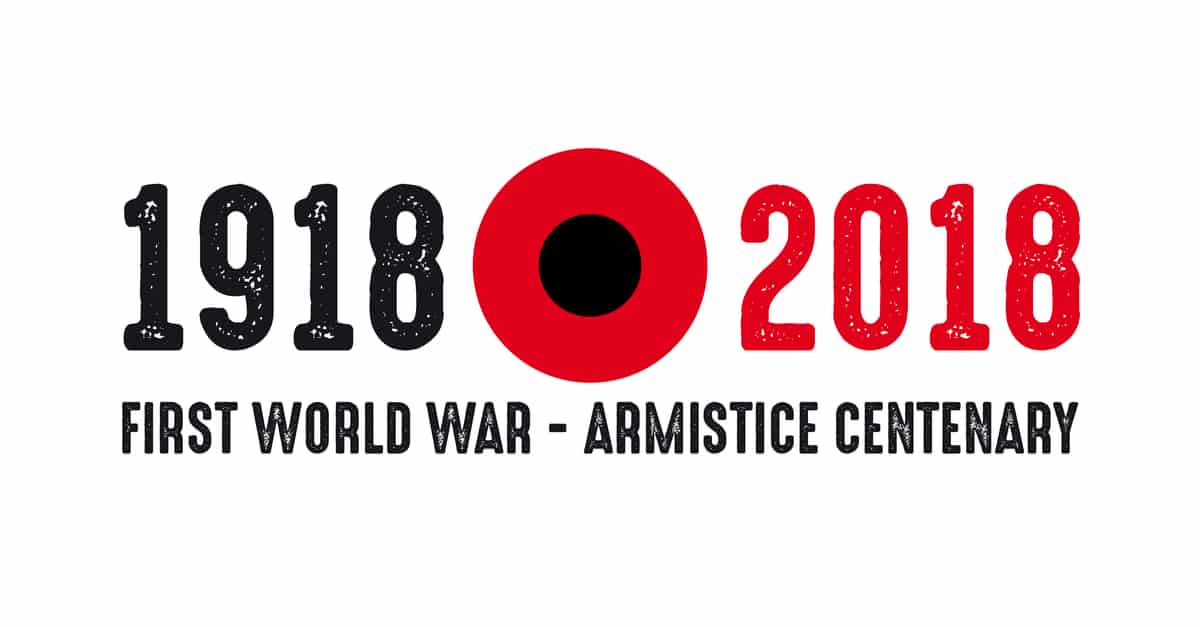
Ipswich
Memorial Hall
63 Nicholas St, Ipswich
From 10:30am
Redbank Plains
Seasons Care Home
15 Argyle Street, Redbank Plains
From 10:45am
The Workshops Rail Museum
North St, North Ipswich
From 10:30am
Redbank
Redbank Memorial Reserve
Redbank Memorial
Bridge Street, Redbank
From 10:30am
Rosewood
RSL Memorial Hall
Mill St, Rosewood
From 10:15am
Goodna
Soldier’s Memorial Stone
Corner Queen and Church Streets
Goodna
From 10:40am

